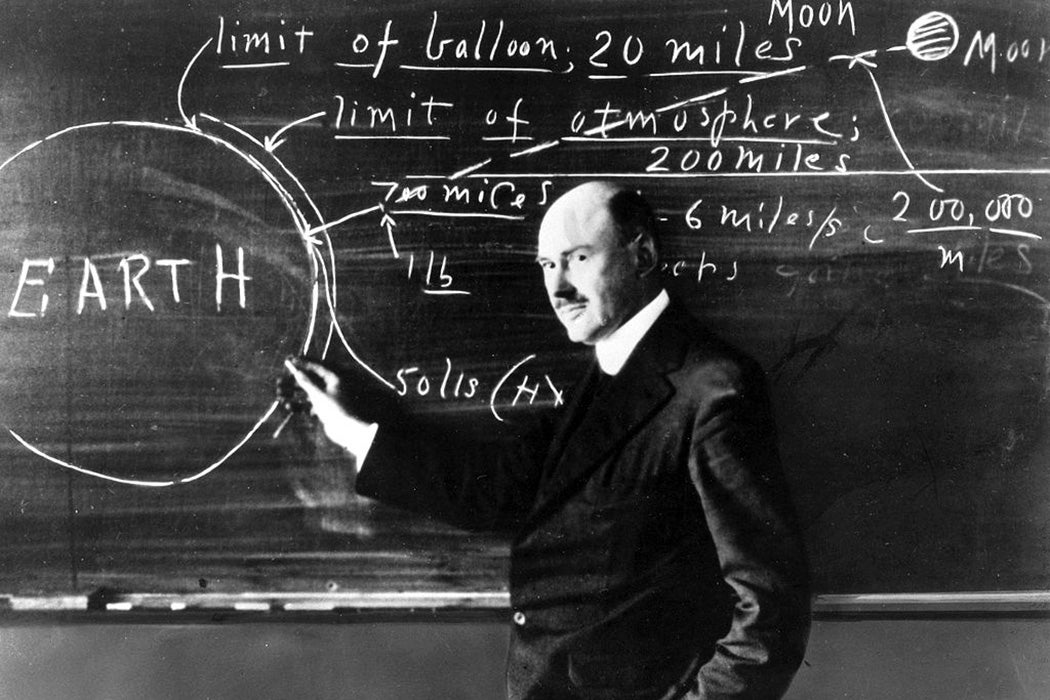Robert H. Goddard, born 135 years ago this month, is acknowledged by many as the “father” of rocketry. It’s a strange paternity, since he had so little influence on his contemporaries. He took out his first rocket patents in 1914 and in 1916 proved that it was possible for a rocket to thrust in a vacuum (plenty of people mocked that notion even after this). In 1926, after nine years of work, Goddard was the first person to launch a liquid-propelled rocket. It went up a few dozen feet over Auburn, Massachusetts. In 1929, one of his rockets set fire to an Auburn field; afterwards he was requested to stop burning up Worcester County. “On the whole, his technical and theoretical achievements, while impressive, did not contribute significantly to American rocketry,” summarizes NASA historian J.D. Hunley. But that’s not exactly the whole story.
Mystical about space travel and the future of the species, Goddard ended up working far from funders and universities with a small team in Roswell, New Mexico, through the 1930s. He had over two hundred patents to his name, more than half awarded after his death in 1945. In many ways, Goddard was a nineteenth century man, an ingenious tinkerer and inventor in the wrong era. Hunley writes, “he failed to have more than an inspirational influence on most specific developments in modern rocketry […] even though he anticipated a great many of these developments in the patented components of his rockets.”
Hunley attributes several factors to Goddard’s ultimate failure to send a rocket to extremely high altitudes. These are: his upbringing in a traditional New England tinkerer-inventor milieu; his poor health (he had tuberculosis); the shaky year-to-year nature of the grants he was awarded for his work; and his “personal inclination to mysticism.” Above all, Goddard failed to follow the “step-by-step procedures called for by standard engineering practice.” In practice, large-scale organization and lots of government spending were what put dogs in orbit and men on the moon, not brilliant and quirky inventors.
Goddard died in 1945 at the age of 62. He lived long enough to hear about the V-2 rockets raining down on London. Wernher von Braun, the Nazi instrumental in helping put an American on the Moon, knew more about Goddard’s work than the Americans he worked with after World War II.
In another world, von Braun, a member of the SS who worked on technology for killing civilians built with slave labor—many thousands of whom were worked to death—might have been charged with war crimes. Instead, he was rescued by the U.S. military and made the cover of Time as an American hero. The rocket-propelled terror bombing von Braun pioneered was far removed from the glorious future in space dreamed about by Robert Goddard. Technologies, after all, are just tools.







